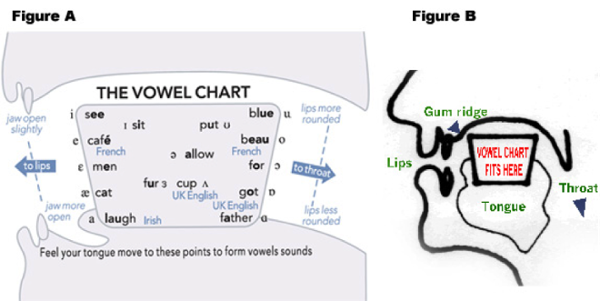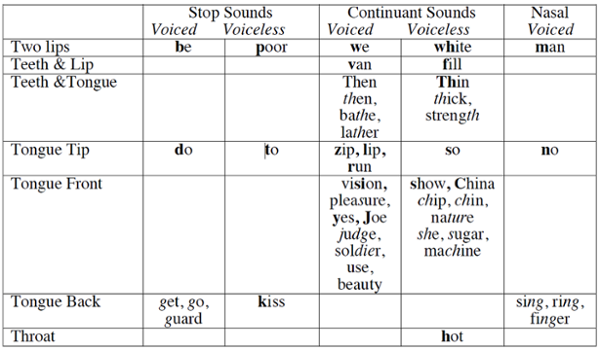Tips for instructors for whom english is a second language
If you are an English second language speaker and have concerns about how well students can understand what you are saying, here are some practical tips.
The UNB English Language Program offers individual coaching on pronunciation in what it calls “tutorial format” which is set up at times convenient for you. These tutorial sessions are typically 50 minutes in length and cost $34 and offered for a minimum of 4. You can arrange them by calling 453-3578.
Classroom tips
Speak slowly. This may seem strange at first, but it will help your pronunciation.
Repeat key words or concepts.
Enlist students as helpers. Tell them you understand that some people may find it difficult at times to understand everything you say, but you want to make sure everyone does so they can do the best they can. Then ask them to raise their hand and offer corrections if you pronounce something incorrectly. Or, when introducing new terms, ask students if you are saying them correctly. Students generally appreciate being asked to help.
If you can’t remember the English word for a term that you know in your first language, say the word in that language and see if any students know the English word.
Make less of the explanation of concepts dependent on what you say. Have terms on slides so students can see them as well as hear you say them. Use audio, video, pictures and graphs to make your points, too. Use the assertion evidence approach, shown below, where the slide title is a statement encapsulating the point of the slide, and the supporting material is evidence to support the statement in visual format (for more examples of visual slide treatments, see article Lecture Slide Design.
This:

Not this:

Photo credits: Josh Mitro, Penn State
Ask content-related questions. Rather than asking, “Does everyone understand?” or “Are there any questions?”, ask questions about content to determine how well they have understood.
Outside the classroom “homework”:
Prepare lecture notes and rehearse.
Practice pronunciation. Identify words that occur frequently in your field and practice pronouncing them with an English First Language speaker.
Expose yourself to English as much as possible.
Focus on challenging sounds. Figure out the sounds you have the most trouble with and focus on them. Pick a sound (such as "th" "r" "v" “l”) to focus on each week. Find a newspaper or magazine article and circle all words with your target sound. Then, read the article aloud, focusing on your sound of the week.
Try these “tongue twisters” with audio.
Spend some time focusing on larger chunks of speech (words, phrases and sentences) in addition to individual sounds and syllables. Notice and practice the rhythm of English expression. Listen to the "musical rhythm" of English first language speakers as they talk. Play back their conversation in your mind and notice when their voices rise and fall. English sentences or clauses have a major pitch change on the last major word. This is because in English, most important or new information is placed at or near the end of a sentence. The pitch change draws attention to this important information.
Word pronunciation stress examples:
| Stress on 1st Syllable | Stress on 2nd Syllable | Stress on 3rd Syllable |
|---|---|---|
| Inference Exercises Necessary Concentrate Management Library Reference Controversy |
Assignment Discussion Activity Conclusion Impossible Experience Prediction Material |
Information Education Introduction University Satisfactory Academic Hypothetical Controversial |
The “mechanics” of word sounds: understanding how and where word sounds are made as a guide to improving pronunciation:
Vowels:

Consonants:

Critique your performance. Videotape a lecture (or part thereof) and critique it to see things as students see them, then select things to work on.
Useful classroom expressions
Typical phrases that identify the type of information are:
Introducing a lab or discussion:
“What we are going to cover today is . . .”
“Today, we are going to talk about . . .”
“Last time we talked about . . ., today we will go on to . . .”
“Today’s topic is . . .”
“The purpose of our lab experiment today is . . .”
Giving examples or emphasizing main points:
“Let me give you an example . . .”
“For instance/For example . . .”
“Now, there are two things that are really important. First, . . .”
“What this means is that . . .”
“Now pay attention to this next part . . .”
Inviting questions and rewarding participation:
“What do you think?”
“Could you explain that a little more?”
“Can you think of an example?”
“Who can tell me what our next step is?”
“Exactly.”
“Almost. Consider ... Now, what do you think?”
Encouraging participation by having students tell how to proceed with a problem or issue.
“How’s it going, [first name]?/ What’s up?”
“Any problems so far?”
“How are you doing with [possibly difficult point/problem]?"
“Where should we start?”
“What should we do next?”
“What do you remember about this step/part?”
“And so what’s our answer?”
Using transitions to signal a move from one topic to the next, or to show how one idea is related to another:
“This is the first step.”
“Now pay close attention to this part because this is the part you have to know.”
“What I’d like to do next is focus on . . . .”
Concluding a class or lecture topic by summarizing the main points:
“To summarize . . .”
“What we have been talking about is . . .”
“The important points to remember are . . .”
“So far, we have been discussing . . ., in the next class we will . . .”
“Who can summarize what we have done so far?”
References
ESL Mania: Seven Ways to Improve Your Accent.
Pain, E., 2011 Presentation Tips for Non-Native Speakers. Science Careers. June 17.
